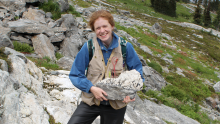Those struggling with the temptations of chocolate-bar-laden store checkouts may have something to learn from the humble fruit fly.
While the flies initially prefer food with a sweet flavour, they quickly learn to opt for less sweet food sources that offer more calories and nutritional value, according to new research by UBC zoologists.
The findings - published this week in the Journal of Neuroscience - are the first to measure the shift in food preference over time, and the first to find that flies opt for nutritious food more quickly when they’re hungry.
“The taste system is important for quick - often life and death - decisions about what to eat," says Michael Gordon, a UBC neurobiologist and senior author on the paper. "Typically the initial taste of sugar indicates a good source of carbohydrates, but longer-term feeding preferences integrate past experiences and learning. It appears that nutritional content is an important part of that.”
“From a behavioural standpoint, it seems that mammals and flies can show similar responses to calorie sensing," adds Gordon, an assistant professor with the Department of Zoology. "But mechanistically we’re still only beginning to understand how either senses the caloric value of food independently of taste after eating it.”
The researchers allowed fruit flies--Drosophila melanogaster--to choose between sources of liquid sugar that varied in their ratios of sweetness to caloric value. In some instances it took the populations of flies as little as four hours to shift their preference towards more nutritious food sources--typically based on sugars like sucrose, maltose and D-glucose.
Using mutant strains of flies, Gordon and his team also isolated several molecular pathways that appear to affect taste and feeding preference. They found that developing a preference for caloric sugars depends on the cAMP pathway, which plays a wide array of roles in the nervous system but is best known for affecting learning and memory.
The researchers also found that blocking insulin signaling in a strain of flies increased their preference for nutritious sugars.
“Since insulin plays important metabolic roles in both flies and mammals and is known to be regulated by feeding, it makes sense that insulin signaling could also regulate feeding behaviour--something that has also been demonstrated in mammals,” adds Gordon.
The research was supported by the Canadian Institutes of Health Research and the Natural Sciences and Engineering Research Council of Canada.
Musqueam First Nation land acknowledegement
We honour xwməθkwəy̓ əm (Musqueam) on whose ancestral, unceded territory UBC Vancouver is situated. UBC Science is committed to building meaningful relationships with Indigenous peoples so we can advance Reconciliation and ensure traditional ways of knowing enrich our teaching and research.
Learn more: Musqueam First Nation
Faculty of Science
Office of the Dean, Earth Sciences Building2178–2207 Main Mall
Vancouver, BC Canada
V6T 1Z4


